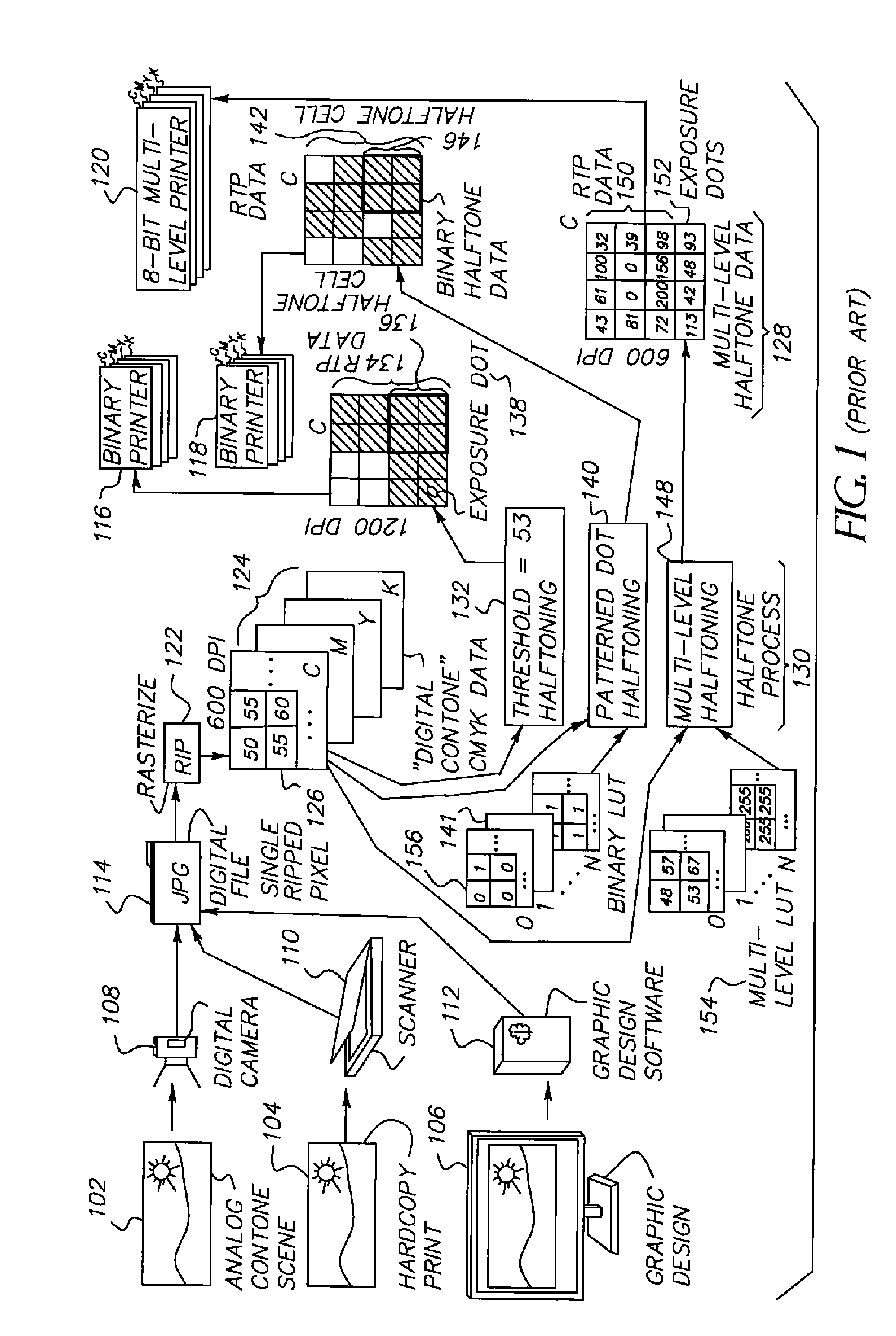Method of making a multilevel halftone screen
a technology of multi-level halftones and halftones, applied in the direction of colour separation/tonal correction, digital marking record carriers, instruments, etc., can solve the problems of worm-like artifact generation, less effective for lower-resolution printing (approximately 2,000 dots per inch), and reduce image artifacts. , to achieve the effect of suppressing image artifacts
- Summary
- Abstract
- Description
- Claims
- Application Information
AI Technical Summary
Benefits of technology
Problems solved by technology
Method used
Image
Examples
Embodiment Construction
[0045]The various embodiments of the present invention described herein disclose three-dimensional (“3D”) halftone screens suitable for multilevel printing. Not only do the 3D halftone screens described herein exhibit characteristics that make them suitable screens for lower-resolution printers, such as EP, CTP, DI, dye sublimation, and lower-resolution ink-jet printers, but their characteristics make them useful screens generally. For example, the sizes of the screen dots on any particular plane of the 3D halftone screens described herein are substantially equal in order to control how screen dots connect. This technique suppresses worm like artifacts common in conventional FM screens, regardless of the printer being used. In addition, the screen dot sizes on any particular plane of the 3D halftone screens described herein generally are not exactly equal, in order to allow for stable toner / ink transfer. While stable toner / ink transfer is useful for lower resolution printing techniq...
PUM
| Property | Measurement | Unit |
|---|---|---|
| frequency | aaaaa | aaaaa |
| size | aaaaa | aaaaa |
| shape | aaaaa | aaaaa |
Abstract
Description
Claims
Application Information
 Login to View More
Login to View More - R&D
- Intellectual Property
- Life Sciences
- Materials
- Tech Scout
- Unparalleled Data Quality
- Higher Quality Content
- 60% Fewer Hallucinations
Browse by: Latest US Patents, China's latest patents, Technical Efficacy Thesaurus, Application Domain, Technology Topic, Popular Technical Reports.
© 2025 PatSnap. All rights reserved.Legal|Privacy policy|Modern Slavery Act Transparency Statement|Sitemap|About US| Contact US: help@patsnap.com



